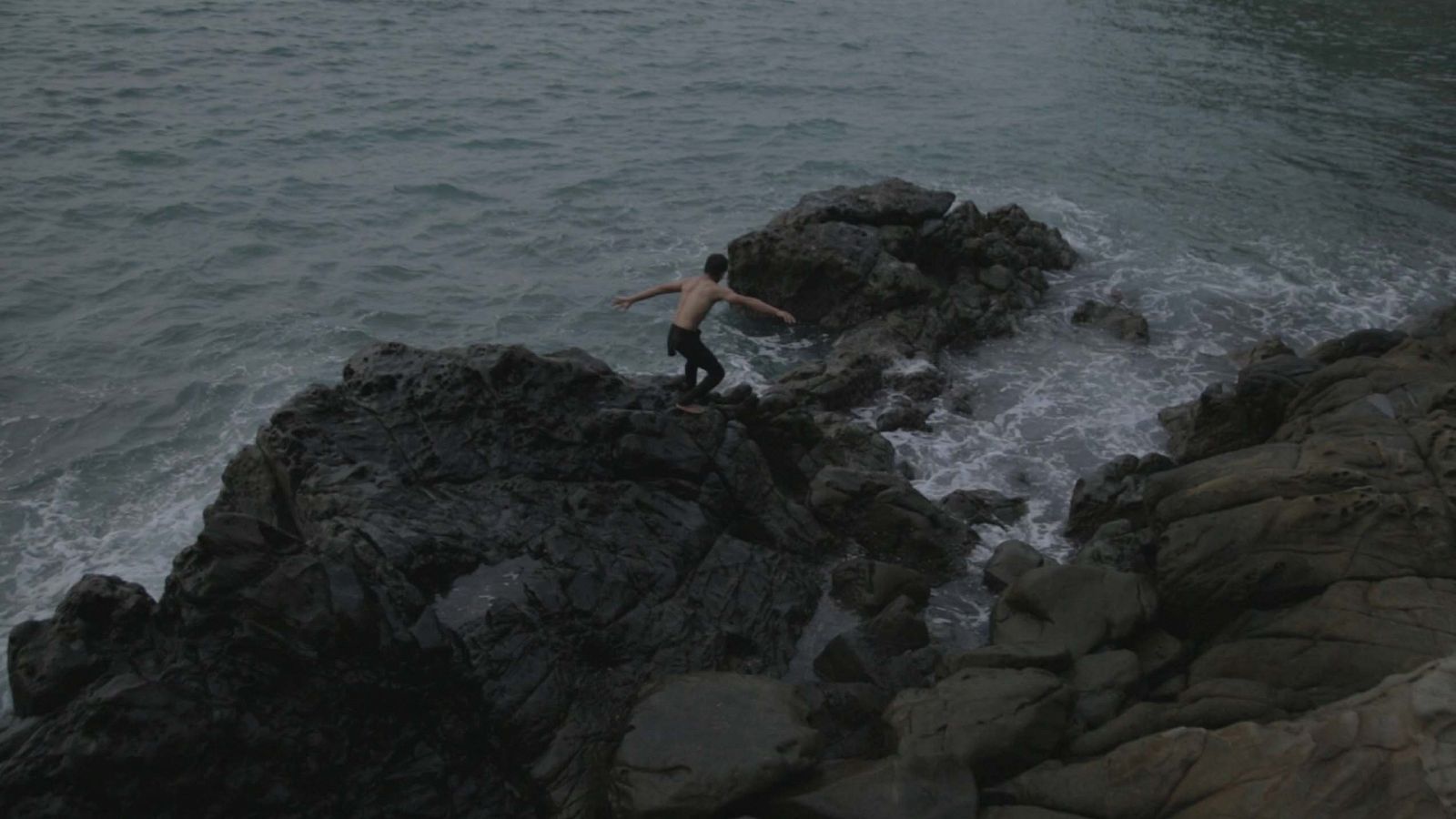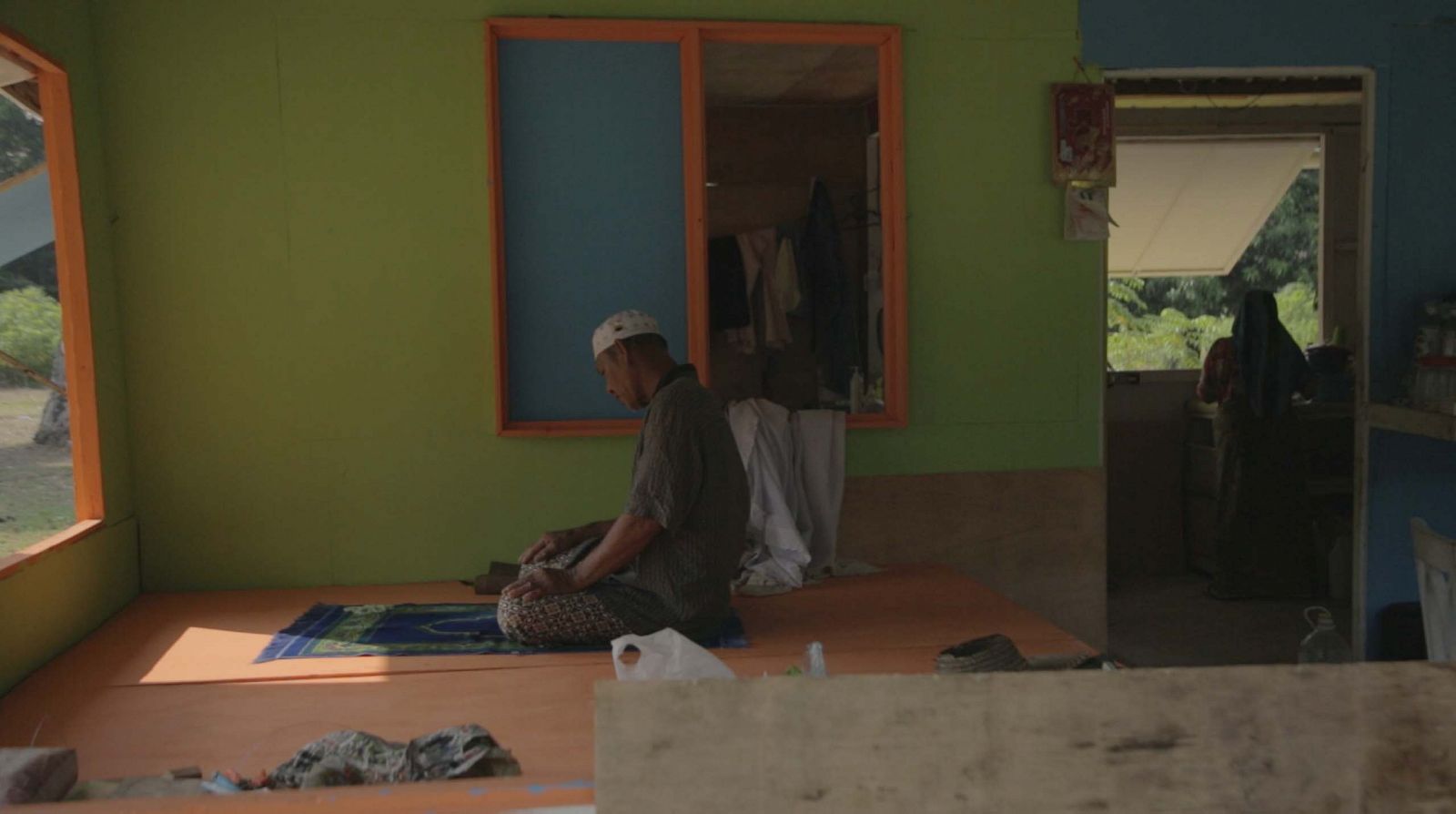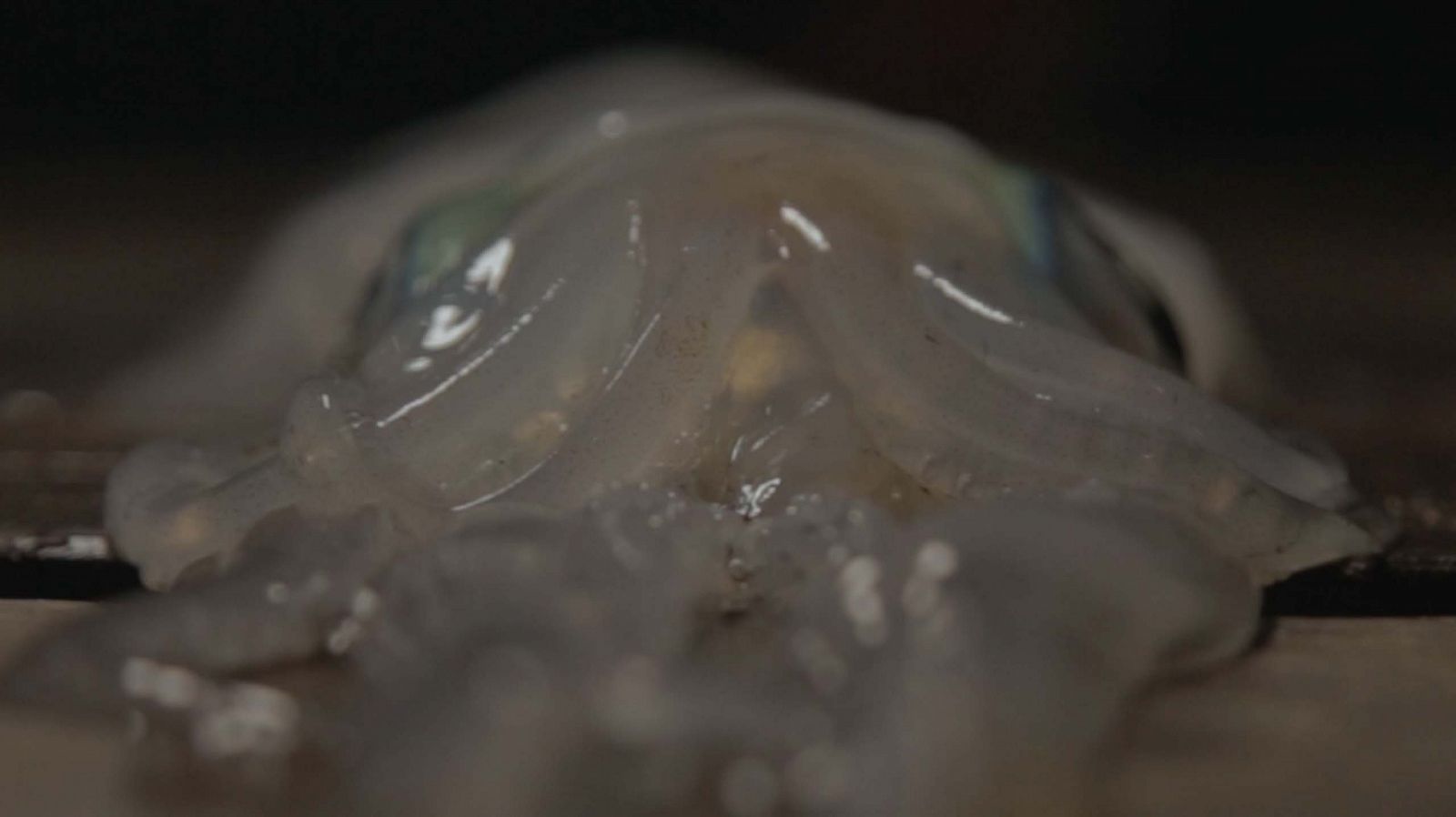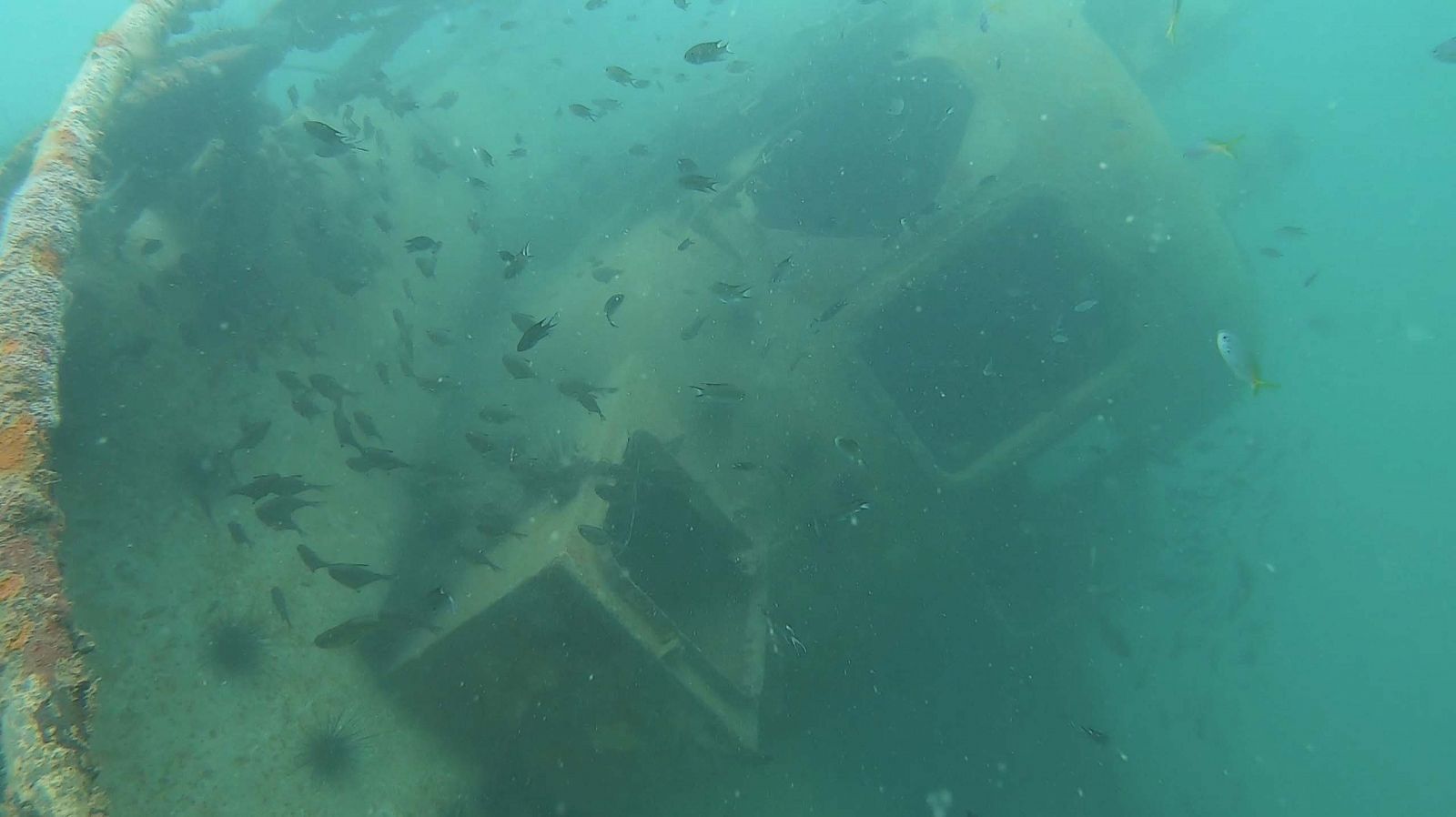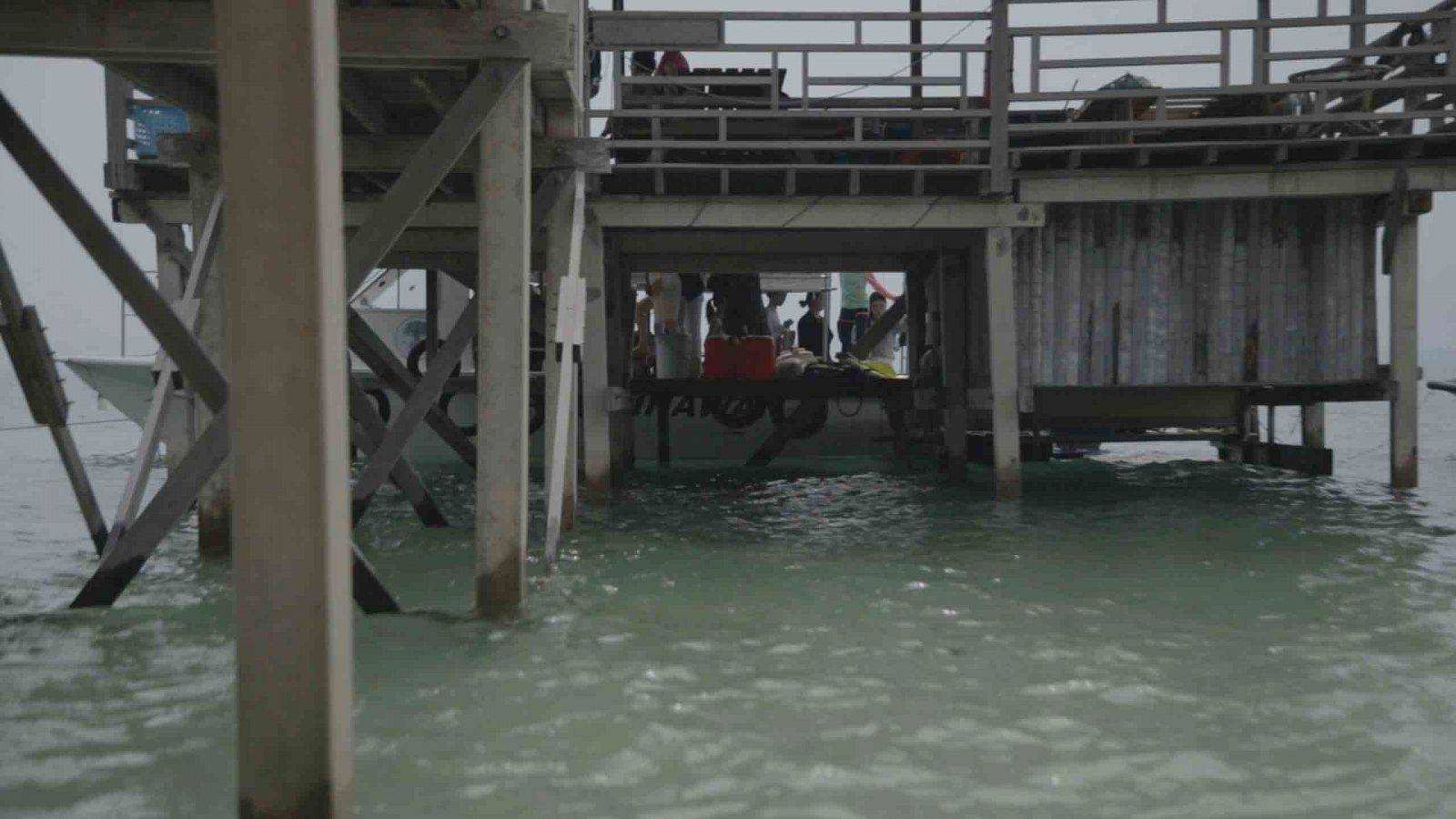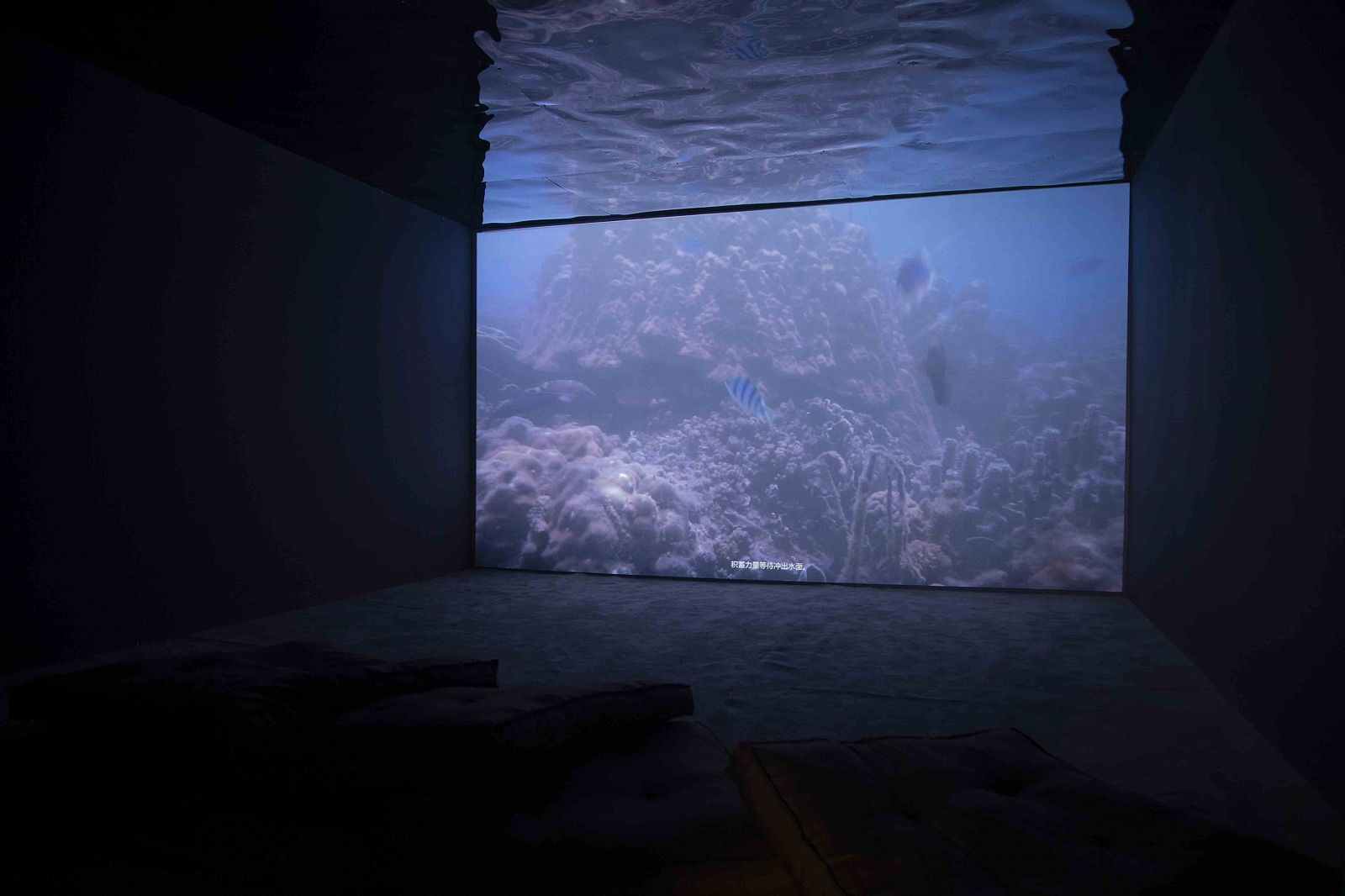In Hu Wei’s work of video art Long Time Between Sunsets and Underground Waves, two simultaneous first-person narratives alternate and echo one another: that of a man “imprisoned” on an island, and that of a being who inhabits the depths of the ocean. This pair of circling voices is shot through by starkly different yet fundamentally similar experiences: two identities unable to gain recognition, two bodies unable to come ashore—tangled and trapped, it seems, by the same fate.
In a letter written to his mother, we learn that the man has said goodbye to the anxieties of city life and left to work on “the island.” Significantly, to get to the island, he has been loaded onto a ship carrying building materials and household products, in what is likely one of the most degrading moments of his human life. On the island, he and other laborers can apply for an IMM13 refugee visa to move about “freely” within 20 km within their place of residence, yet in 23 years, he has never once left the island, not because he doesn’t want to, but because there’s nowhere to go: all that awaits him if he leaves is a wandering homelessness in the city.
Through the man’s first-person account and the stories of locals, the video reveals the plight of these stateless immigrant laborers. At the same time, the island’s past begins to emerge: it is privately owned, and the rhythms of the tides and primitive labor methods ensure that its economy remains slow and inefficient. Most of the documentary scenes that the artist presents hint at a peaceful ordinariness, yet a passing shot of a hillside nearly covered in tombstones brutally reveals the island’s scars: the graves seem to hold not only bones but a history of colonization and plunder that seems to linger in the damp air, like the legends passed down by the island’s Bajau people.
Stateless persons are like stray brushmarks outside the map, or like parcels refused by both sender and receiver. They can never be entered into the state’s records, or even be acknowledged by the world. According to UN data available online, there are around 12 million stateless persons worldwide, though how this figure is changing is not easy to verify, and not many people seem to be tracking it. Their status is due mainly to wars, colonization, territorial changes, and cross-border marriages. The second half of the video shows how the stateless persons in Sabah were the subject of an infamous controversy—Project IC, an alleged plan by the Malaysian government in the 1990s to illegally bring in Muslim immigrants and give them identity cards to manipulate election results. Just as in border disputes, these “places once thought to be so important that they were worth fighting for are often forgotten once the battle is over.” 1Alastair Bonnett, Unruly Places: Lost Spaces, Secret Cities, and Other Inscrutable Geographies (New York: Houghton Mifflin, 2014), p. 77 Aren’t these stateless immigrants just like forgotten lands? The concept of “person” is obliterated, reappropriated as lifeless ghost ballots. This also means that in the modern state system, the children of these stateless laborers are incomplete from the moment they are born.
Alongside this story, the voice from the ocean depths tells us of its form and its origins: “I” am a species that humanity is still unable to name, a species of fish that came ashore, evolved into mammals, and then returned to the sea, growing up where the island gives way to the ocean, facing Sabah from across the water, and waiting in the depths for the moment to burst through the surface . . . While these descriptions cannot delineate precisely what this being is, it’s clear that it once stood apart from humanity. With each sentence, the being’s tone changes, from conviction to contempt to resentment, and finally to confusion. Indeed, the video sets up a mortal antagonism between this being and humankind. It has witnessed the truth of the tombstones, their cruelty and deception, and it too has quietly suffered: through the video’s first-person narratives, the viewer feels the invasion of civilization as a sort of vicarious pain.
Throughout the video, the narrative scenes switch between modern life and a lost civilization. As information about the immigrant workers is interrupted over and over by the voice of the being from the depths of the ocean, we gradually realize that the artist’s concerns are not directed entirely at labor issues in a particular setting. Rather, they spread out from identity politics to biopolitics, from the scale of the species back to the contradictions of human institutions. The more crucial problem set before the stateless person is thus: before one becomes a citizen, how does one become human? Here Giorgio Agamben’s words seem especially enlightening: man “must recognize himself in a non-man in order to be human.” 2Giorgio Agamben, The Open: Man and Animal, translated by Kevin Attell (Stanford: Stanford University Press, 2005), p. 27.
Comparing the predicaments each faces, we find an almost diametric opposition: the stateless person is trapped on the island because he is rejected by the modern state system; conversely, the being from depths can freely cross the boundaries of state and geography, yet as a species it cannot achieve recognition. Hence the question and the conflict that the video poses ultimately seem to return to the fundamental issue of recognition: humanity cannot unequivocally confirm this species’ existence, and likewise the being cannot in any way manifest itself within the order of the human.
As for these “innate contradictions,” halfway through the video, the artist introduces a highly significant twist—namely, he has these two characters “meet”: the first-person laborer feels something staring at him in the woods, and then finds himself dragged down to the seabed. Along the way he sees steel wreckage, broken machines, missing bodies . . . and intriguing questions appear in his mind: can people who live underwater give birth to children with spleens adapted to life in the sea? More importantly, perhaps, all this points to memories and thoughts from a non-human perspective. Eventually the man faints, and when he awakens it is already past dusk. He seems to have disappeared for many years, and at this point there’s a break in the narrative. In this strange encounter, a man rejected by the modern state system and a being that humans are unable to recognize form an unspoken understanding that becomes part of the lives of each one. These two “wounds” in the narratives of humanity—stateless persons and nonhuman life—seem to have healed together.
In retrospect, the film has too many shots of “coming ashore” and “departing”. This becomes an obvious metaphor, because for humankind, coming ashore is an act of taking on a new identity, whereas for the being from the ocean depths, coming ashore means an opportunity for its species to be recognized. Long Time Between Sunsets and Underground Waves ends with upbeat music and a shot that could be an arrival or a departure—it’s not clear. Watching the islands recede into the distance, I assumed this meant that the story of the stateless person had come to an end, even as it alluded to a more distant, unfinished narrative about the human and the non-human.
Perhaps these rejected identities and unrecognizable forms of life may remind us of our complacent dependence on the “mechanisms” of humanity. We have all perhaps read phrases like “inhumane treatment.” What does “inhumane” mean? The notion would seem to subvert our biological essence as beings who are born human. A man has been treated in a manner that tramples on the dignity of the species, or even undermines the classical conception of the person.
In fact, the question of the boundaries of humankind amid increasingly complicated ethical conflicts is far from resolved. If countless cyberpunk fantasies assume that human-machine relations are a cause for dread, then a complementary question, posed from remote antiquity, is whether humanity may in the end revert to animals: the former brings the ethics of humans and machines into present-day life; the latter takes the boundary between humans and animals to be the origin of humanity. The commonality they share is this: both the posthuman and the prehuman adopt a nonhuman perspective to reexamine humanity itself. This is also why, in the film, the artist takes the perspective of a nonhuman being to probe the issue of the identity of stateless persons.
With this in mind, let us look again at Sabah: its history, its legends, the reasons for its current status have become the necessary preconditions for all the narratives in this work. It is not merely a real, geographical backdrop or setting; rather, the particularity of the island’s history and its current status establish a sort of closed-loop relationship. Only in such a relationship can the stateless achieve a minimal recognition, and only then do the concept and problem of humanity appear in a series of chains. Yet we have to realize: the ultimate paradox is that human existence cannot rely on tangible things. Perhaps this is the conclusion toward which the film finally points.
On its surface, the plight of the stateless appears to be the result of institutional relations among humans, yet in essence, it undermines the integrity of human existence. Viewed from the situation presented by the artist, one of conflict and commiseration between the two voices, the indissoluble boundary between the human and the non-human seems to dissolve into a series of more “humane” dotted lines. In such an act of erasing boundaries, a formerly concealed human nature comes to light.
Ultimately, if being “born human” is an innate biological fact, under the present historical circumstances, then biological traits are not sufficient to identify one as human. For it is not enough merely to be born human: one must also have the steadfastness to remain human, to remain wholly, concretely, unfalteringly human. To remain human, as one already is—this is humanity’s first and perhaps ultimate historical task.
Translated from the Chinese by Allen Young.
Wang Huan is a Beijing-based writer, critic and curator. He has tried practising a kind of anti-stylistic writing and has published a series of art reviews in various public media. He won first place in the 5th International Award for Art Criticism (IAAC) in 2018. He won the PSA 2019 Emerging Curators Project with the curatorial project "Sunset on a Dead End" in 2019. He published the book "NOTHING LEFT BUT WORDS" as chef editor in 2020.
Allen Young teaches in World Languages and Humanities at NYU Shanghai and translates from Chinese and Spanish.
